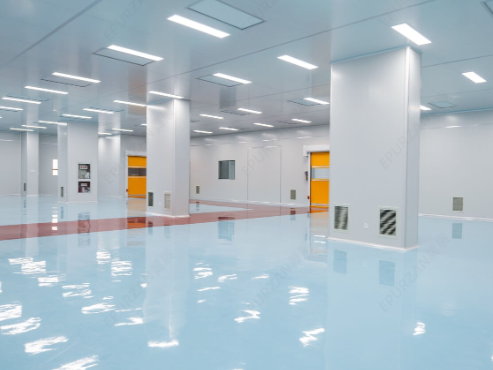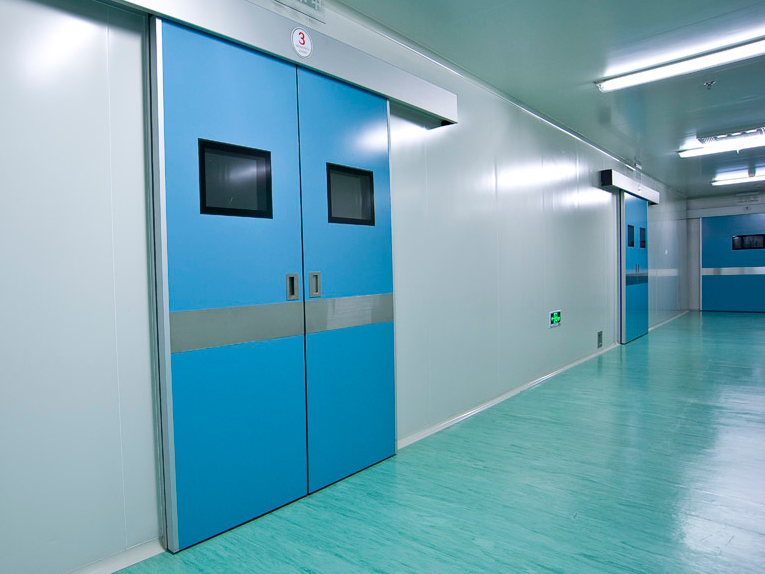

The movement of fluid is inseparable from the effect of "pressure difference". In a clean area, the pressure difference between each room relative to the outdoor atmosphere is called the "absolute pressure difference". The pressure difference between each adjacent room and adjacent area is called the "relative pressure difference", or "pressure difference" for short. The pressure difference between a clean room and adjacent connected rooms or surrounding spaces is an important means to maintain indoor cleanliness or limit the spread of indoor pollutants. Different industries have different pressure differential requirements for clean rooms. Today, we will share with you the pressure difference requirements of several common clean room specifications.
Pharmaceutical industry
①The "Good Manufacturing Practice for Pharmaceutical Products" stipulates: The pressure difference between clean areas and non-clean areas and between different clean areas should not be less than 10Pa. When necessary, appropriate pressure gradients should also be maintained between different functional areas (operating rooms) of the same cleanliness level.
②The "Veterinary Drug Manufacturing Good Manufacturing Practice" stipulates: The static pressure difference between adjacent clean rooms (areas) with different air cleanliness levels should be greater than 5 Pa.
The static pressure difference between the clean room (area) and non-clean room (area) should be greater than 10 Pa.
The static pressure difference between the clean room (area) and the outdoor atmosphere (including areas directly connected to the outdoors) should be greater than 12 Pa, and there should be a device to indicate the pressure difference or a monitoring and alarm system.
For clean room workshops of biological products, the absolute value of the static pressure difference specified above should be determined according to process requirements.
③The "Pharmaceutical Clean Room Design Standards" stipulates: The air static pressure difference between medical clean rooms with different air cleanliness levels and between clean rooms and non-clean rooms should not be less than 10Pa, and the static pressure difference between medical clean rooms and the outdoor atmosphere should not be less than 10Pa.
In addition, the following pharmaceutical clean rooms should be equipped with devices indicating pressure differences:
Between clean room and non-clean room;
Between clean rooms with different air cleanliness levels
Within the production area of the same cleanliness level, there are more important operation rooms that need to maintain relative negative pressure or positive pressure;
The air lock in the material clean room and the positive pressure or negative pressure air lock to block the air flow between the change rooms of different cleanliness levels in the personnel clean room;
Mechanical means are used to continuously transport materials in and out of the clean room.
The following medical clean rooms should maintain relative negative pressure with adjacent medical clean rooms:
Pharmaceutical clean rooms that emit dust during production;
Pharmaceutical clean rooms where organic solvents are used in the production process;
Medical clean rooms that produce a large amount of harmful substances, hot and humid gases and odors during the production process;
Refining, drying and packaging rooms for penicillins and other special drugs and their packaging rooms for preparations.
Medical and health industry
"Technical Specifications for Construction of Hospital Clean Surgery Departments" stipulates:
● Between interconnected clean rooms of different cleanliness levels, rooms with higher cleanliness should maintain a relatively positive pressure to rooms with lower cleanliness. The minimum static pressure difference should be greater than or equal to 5Pa, and the maximum static pressure difference should be less than 20Pa. The pressure difference should not cause a whistle or affect the opening of the door.
● There should be an appropriate pressure difference between interconnected clean rooms of the same cleanliness level to maintain the required air flow direction.
● A severely polluted room should maintain a negative pressure to adjacent connected rooms, and the minimum static pressure difference should be greater than or equal to 5Pa. The operating room used to control airborne infections should be a negative pressure operating room, and the negative pressure operating room should maintain a negative pressure difference slightly lower than "0" on the technical mezzanine on its suspended ceiling.
● The clean area should maintain positive pressure to the non-clean area connected to it, and the minimum static pressure difference should be greater than or equal to 5Pa.
Food industry
"Technical Specifications for Construction of Clean Rooms in Food Industry" stipulates:
● A static pressure difference of ≥5Pa should be maintained between adjacent connected clean rooms and between clean areas and non-clean areas. The clean area should maintain a positive pressure difference of ≥10Pa to the outdoors.
● The room where contamination occurs should be maintained at a relatively negative pressure. Rooms with high requirements for contamination control should maintain a relatively positive pressure.
● When the production flow operation requires opening a hole in the wall of the clean room, it is advisable to maintain a directional airflow at the hole from the side with the higher level of the clean room to the lower side of the clean room through the hole. The average air velocity of the air flow at the hole should be ≥ 0.2m/s.
Precision manufacturing
① The "Electronic Industry Clean Room Design Code" points out that a certain static pressure difference should be maintained between the clean room (area) and the surrounding space. The static pressure difference should meet the following regulations:
● The static pressure difference between each clean room (area) and the surrounding space should be determined according to the production process requirements;
● The static pressure difference between clean rooms (areas) of different levels should be greater than or equal to 5Pa;
● The static pressure difference between the clean room (area) and non-clean room (area) should be greater than 5Pa;
● The static pressure difference between the clean room (area) and the outdoors should be greater than 10Pa.
② "Clean Room Design Code" stipulates:
A certain pressure difference must be maintained between the clean room (area) and the surrounding space, and a positive or negative pressure difference should be maintained according to process requirements.
The pressure difference between clean rooms of different levels should not be less than 5Pa, the pressure difference between clean areas and non-clean areas should not be less than 5Pa, and the pressure difference between clean areas and outdoors should not be less than 10Pa.
The differential pressure air required to maintain different pressure differential values in a clean room should be determined by the stitching method or the air change method according to the characteristics of the clean room.
The opening and closing of the supply air and exhaust systems should be interlocked. In the correct clean room interlocking sequence, the air supply fan should be started first, and then the return air fan and exhaust fan should be started; when closing, the interlocking sequence should be reversed. The interlocking procedure for negative pressure clean rooms should be opposite to the above for positive pressure clean rooms.
For clean rooms with non-continuous operation, on-duty air supply can be set up according to the production process requirements, and purification air conditioning should be carried out.
Post time: Sep-19-2023

